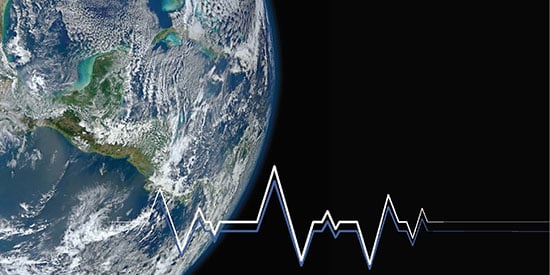Scientists warn time is running out to save the planet
Media releaseTwenty five years ago, a majority of the world's living Nobel Laureates united to sign a warning letter about the Earth; today, scientists have taken grassroots action, with a scorecard showing that of nine areas only one has improved: our ozone.
The scientists say urgent action must be taken to avoid substantial and irreversible harm to the Earth.
The article, "World Scientists' Warning to Humanity: A Second Notice", has been co-signed by more than 15,000 scientists in 184 countries and is published today in the journal BioScience.
Included is a series of graphs that highlight at a glance the direction things have headed.
Co-author Dr Thomas Newsome, a research fellow at Deakin University and The University of Sydney, said he believed this was possibly the biggest number of signatories to any published scientific paper.
"It's an overwhelming response we didn't quite expect," said Dr Newsome, who issued a number of Tweets to garner interest via his handle @NewsomeTM and using the hashtag #ScientistsWarningtoHumanity.
Dr Newsome, a multi award-winning early career researcher and author, said their callout on the first day, four months ago, attracted almost 600 signatories.
"People just started sharing the letter; it was added to a few email lists and things just took off from there," he said.
The initial warning 25 years ago identified trends that needed to be reversed to curtail environmental destruction, including ozone depletion, forest loss, climate change and human population growth.
"In this paper we look back on these trends and evaluate the subsequent human response by exploring the available data," Dr Newsome said.
Among the negative 25-year global trends noted in today's article are:
- A 26 per cent reduction in the amount of fresh water available per capita
- A loss of nearly 300 million acres of forestland
- A collective 29 per cent reduction in the numbers of mammals, reptiles, amphibians, birds and fish
- A 75 per cent increase in the number of ocean dead zones.
Regarding Australia, Dr Newsome said habitat loss was the number one threat, and in 2017 we ranked number two in the world for global biodiversity loss, behind Indonesia.
"There's been recent reports on an alarming rise in tree clearance in Queensland - about 400,000 hectares per year; the equivalent of 400,000 football fields - which puts us in line with Brazil," Dr Newsome said.
"All the while we have very low public spending for example on threatened species - around $70 million each year, or less than one hundredth of a percent of the federal government's annual revenue of $416.9 billion - we spend more rehabilitating mine sites each year," he said.
The article states there is still time but notes the areas that need to be improved, including promoting dietary shifts away from meat, encouraging the adoption of renewable energy and limiting human population growth.
Scientists can continue to endorse the warning by visiting http://scientistswarning.forestry.oregonstate.edu/
Co-authors of the article include William Ripple and Christopher Wolf at Oregon State University and Eileen Crist of Virginia Tech in the United States; Mauro Galleti of the Universidade Estadual Paulista in Brazil; Thomas Newsome of The University of Sydney and Deakin University and William Laurence of James Cook University in Australia; Mohammad Alongir of the University of Chittagong in Bangladesh; Mahmoud Mahmoud of the National Oil Spill Detection and Response Agency in Nigeria.

